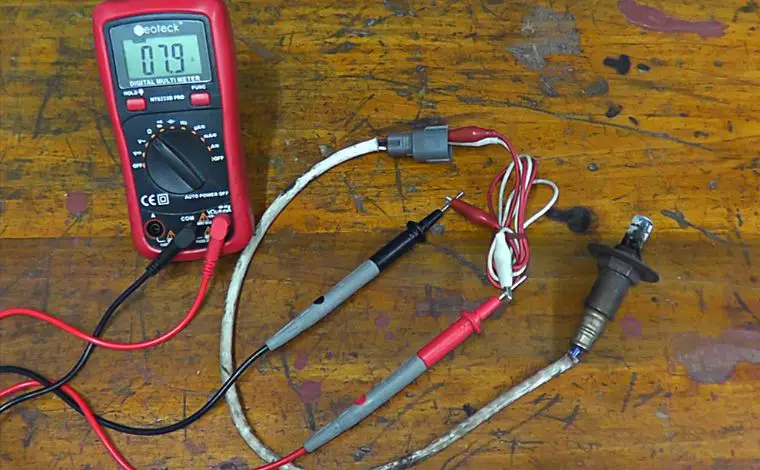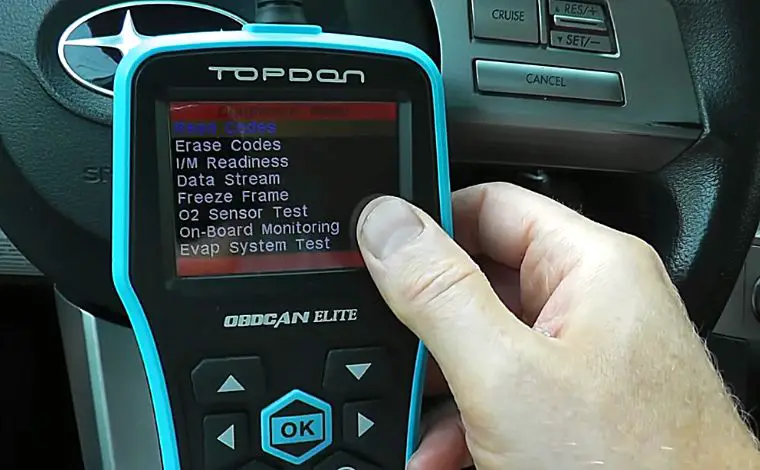Last Updated on April 28, 2025
For modern transportation, saving time and ensuring comfort is crucial — and that’s exactly what cars provide. However, owning a vehicle is only half the story. Proper maintenance is critical if you want your car to run reliably for years. Thanks to technology, cars today come with built-in diagnostic systems (OBD2 scanners) that help detect mechanical issues early on. When a problem occurs, the system displays a specific error code to guide you. One such important code is the P0037 Code, which is related to the heated oxygen sensor’s heater control circuit. Understanding what this code means, what causes it, and how to fix it can save you both time and money.
In this guide, we’ll walk you through everything you need to know about the P0037 Trouble Code — including symptoms, diagnosis steps, DIY fixes, costs, and expert tips.
What Does the Trouble Code P0037 Mean?
The P0037 Code stands for “Heated Oxygen Sensor Heater Control Circuit Low (Bank 1, Sensor 2)“. It signals that there is a low voltage condition detected in the heater circuit of the oxygen sensor located after the catalytic converter on the side of the engine that houses cylinder 1.
An oxygen sensor’s job is to monitor the level of oxygen in the exhaust gases. This information helps your car’s engine control module (ECM) adjust the fuel-to-air mixture for efficient combustion. To work properly, the sensor must reach a high operating temperature quickly. That’s where the built-in heater comes in. If the ECM detects that the heater isn’t drawing the correct amount of voltage, it will trigger the P0037 code.
While it’s considered a generic OBD2 code, slight differences might exist based on vehicle make, model, and year.
Main Causes Behind the P0037 OBD2 Code
Several issues can trigger the P0037 Code, and understanding them can help you diagnose the problem more efficiently. Here are the primary causes:
1. Heater Element Failure
The most common cause is the failure of the heater element inside the oxygen sensor itself. Over time, wear and tear or excessive heat exposure can cause it to burn out.
2. Physical Damage to the Sensor
Physical damage from road debris, water intrusion, corrosion, or improper handling during previous repairs can cause the sensor to malfunction.
3. Faulty Powertrain Control Module (PCM)
Though rare, a malfunctioning PCM could send incorrect signals or misinterpret sensor data, causing the P0037 code to appear.
4. Damaged or Loose Wiring and Connectors
The wiring to the oxygen sensor’s heater circuit can become frayed, shorted, or disconnected, interrupting voltage flow and causing low circuit voltage.
5. Blown Fuse
Sometimes, a blown fuse in the heater circuit will prevent the oxygen sensor from receiving enough voltage, resulting in this trouble code.
By understanding these potential causes, you can approach diagnosis with a focused plan, saving time and avoiding costly mistakes.
Common Symptoms of the P0037 Code
If your vehicle is suffering from the P0037 trouble code, here are the symptoms you’re most likely to notice:
1. Illuminated Check Engine Light
The most immediate and noticeable sign is that your vehicle’s check engine light (or malfunction indicator lamp) will turn on.
2. Failed Emissions Test
Since the oxygen sensor plays a key role in controlling emissions, a failing heater circuit can cause your car to emit higher levels of pollutants — leading to a failed inspection.
3. Poor Fuel Economy
With inaccurate oxygen readings, your engine could run rich (too much fuel), significantly lowering your miles per gallon (MPG).
4. Rough Engine Idle or Hesitation
You may experience slight rough idling, hesitation when accelerating, or overall reduced engine responsiveness.
5. Increased Exhaust Emissions
A malfunctioning sensor can make your vehicle run inefficiently, resulting in higher emissions output, which negatively impacts the environment.
Recognizing these symptoms early can help you avoid bigger, costlier issues later on.
How to Diagnose the P0037 Code Properly
Diagnosing the P0037 Code involves a series of logical steps to pinpoint the root cause. Here’s how you should approach it:
Step 1: Check for Additional Codes
Connect an OBD2 scanner and check for other codes. If multiple codes are present, address them first since they could be contributing to the P0037 error.
Step 2: Visual Inspection of Wiring and Connectors
Inspect the wiring harness and connectors of the Bank 1, Sensor 2 oxygen sensor. Look for signs of physical damage like burns, cuts, corrosion, or loose fittings.
Step 3: Measure Sensor Heater Resistance
Using a digital multimeter, measure the resistance across the heater circuit. The typical acceptable range is between 5 and 10 ohms. A reading outside this range indicates a faulty heater element.
Step 4: Test for Proper Voltage
Turn the ignition key to the “ON” position (engine off) and use a multimeter to verify if the sensor heater circuit is getting 12 volts. Lack of voltage points to fuse, relay, or wiring problems.
Step 5: Inspect Related Fuses and Relays
Locate and test the fuses and relays associated with the oxygen sensor heater circuit. Replace any faulty components as needed.
Step 6: Verify Proper Ground Connection
Make sure the sensor’s ground is solid. A poor ground connection can mimic a heater circuit failure.
Following these steps ensures you accurately find the cause and avoid replacing good parts unnecessarily.
How to Fix the P0037 Trouble Code (Complete DIY Guide)
If you’re ready to fix the P0037 Code yourself, here’s a comprehensive guide:
Step 1: Clear Trouble Codes and Retest
After minor inspections, clear the error codes from memory. Drive the car for a while and rescan. If the code doesn’t reappear, the issue may have been a fluke.
Step 2: Repair Damaged Wires or Connectors
If you spot damaged wires or broken connectors, repair or replace them immediately. Use waterproof connectors and heat shrink tubing for better durability.
Step 3: Replace Blown Fuses
If the oxygen sensor heater fuse is blown, replace it. Ensure you replace it with one of the correct amperage specified by your manufacturer.
Step 4: Replace the Oxygen Sensor
If wiring and voltage tests are fine but the P0037 persists, it’s time to replace Bank 1, Sensor 2 oxygen sensor. Always buy OEM quality sensors to ensure long-term reliability.
Step 5: Seek Professional Help if Needed
If after replacing the sensor and checking all wiring the code still returns, you might be facing a PCM issue. At this stage, visiting a professional technician is recommended.
Repairing the P0037 Code yourself saves you significant repair shop fees and gives you hands-on knowledge about your car’s health.
How Serious Is the P0037 Code?
In general, the P0037 Code isn’t considered highly dangerous for immediate driving. However, ignoring it can cause:
- Poor fuel economy,
- Failed emissions tests,
- Over time, potential catalytic converter damage (which can cost over $1000),
- Risk of causing further performance issues.
Thus, while you can continue driving for a short time with this code present, it’s crucial to fix it as soon as possible to avoid higher expenses and possible environmental fines.
Real-Life Scenario: How P0037 Was Fixed in a 2014 Honda Accord
John, a car owner, noticed his Honda Accord’s check engine light turning on. An OBD2 scan revealed a P0037 Code. Initially worried, he researched the symptoms and diagnosis steps online. Upon visual inspection, he found that a rodent had chewed through part of the oxygen sensor wiring! Rather than replacing the whole sensor, John repaired the wiring, cleared the code, and the issue was resolved.
This example shows that not every P0037 error requires costly parts — sometimes a simple wiring fix can save hundreds of dollars.
How Much Does It Cost to Repair a P0037 Code?
Here’s a general breakdown:
| Repair Action | Estimated Cost Range |
|---|---|
| Replacing Oxygen Sensor | $100 – $300 (part + labor) |
| Wiring Repair | $50 – $150 |
| Fuse Replacement | $10 – $50 |
| PCM Replacement (Rare) | $500 – $1500 |
DIY repairs usually save 50% or more compared to shop repair costs.
Preventive Maintenance Tips for Avoiding P0037 in the Future
- Regularly inspect the wiring around your oxygen sensors.
- Protect the wiring harness from rodents and harsh environments.
- Avoid aggressive driving through flooded or rocky areas where debris could damage the sensors.
- Perform scheduled engine tune-ups and diagnostic scans.
- Address any early check engine light warnings immediately.
FAQs about P0037 Code
Q1: Can I drive with a P0037 Code?
Yes, but it’s not recommended for long-term driving. It’s better to fix it soon to avoid secondary damages.
Q2: Does replacing the oxygen sensor always fix P0037?
Not always. Sometimes the issue is wiring, a blown fuse, or even a PCM fault. Always diagnose properly first.
Q3: How long does it take to replace an oxygen sensor?
Typically 30 minutes to 1 hour if the sensor is easily accessible.
Q4: How can I test if my oxygen sensor heater is working?
You can use a multimeter to check resistance and verify proper 12V power at the heater circuit.
Q5: Is it safe to reset the code without fixing it?
Resetting without addressing the root cause can temporarily clear the light, but the issue will likely return.
Conclusion: Solve P0037 Quickly to Save Money and Keep Your Car Healthy
The P0037 Code might seem like a minor annoyance, but neglecting it can lead to bigger problems. Whether it’s higher fuel costs, environmental pollution, or expensive catalytic converter damage, the risks add up over time. Fortunately, diagnosing and fixing this error yourself is straightforward with the right tools and knowledge. By acting promptly, you not only protect your wallet but also keep your vehicle running smoothly and eco-friendly for years to come.
Kevin Nicholas is an automotive technician who is a genius at software and hardware-related issues. He manually tested more than a hundred OBD scanners and gave his honest opinion on whether the device was worth the money or not. His in-depth OBD review articles help people choose the right product, whether it is a European, American, or Asian vehicle. He completed his Automotive Specialized Training Course at Universal Technical Institute and has more than 15 years of experience in the field.
